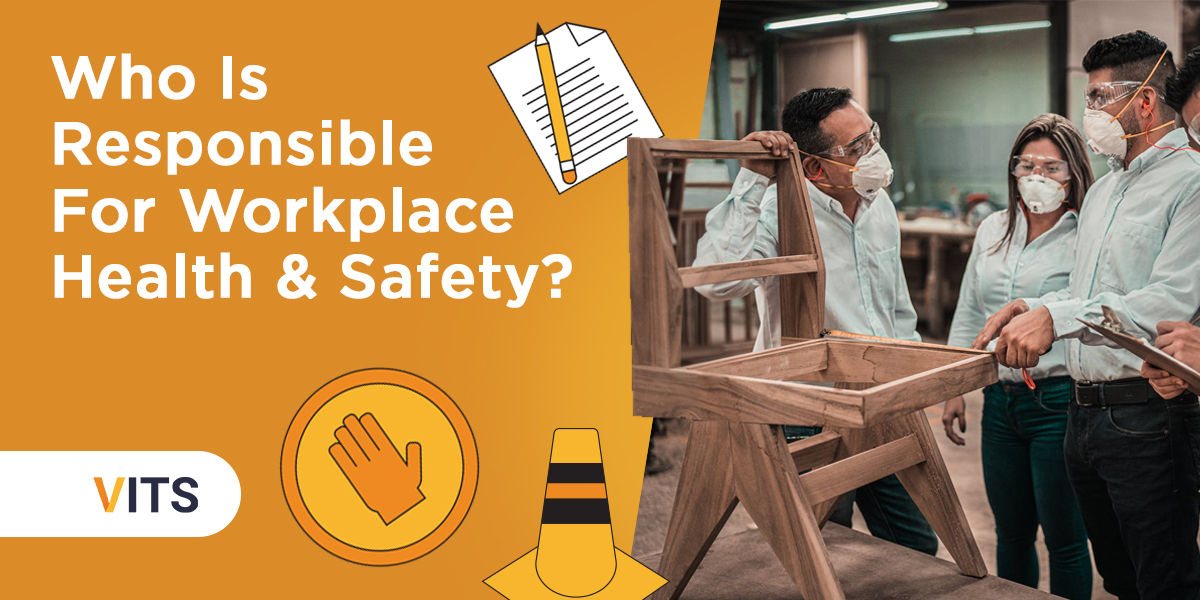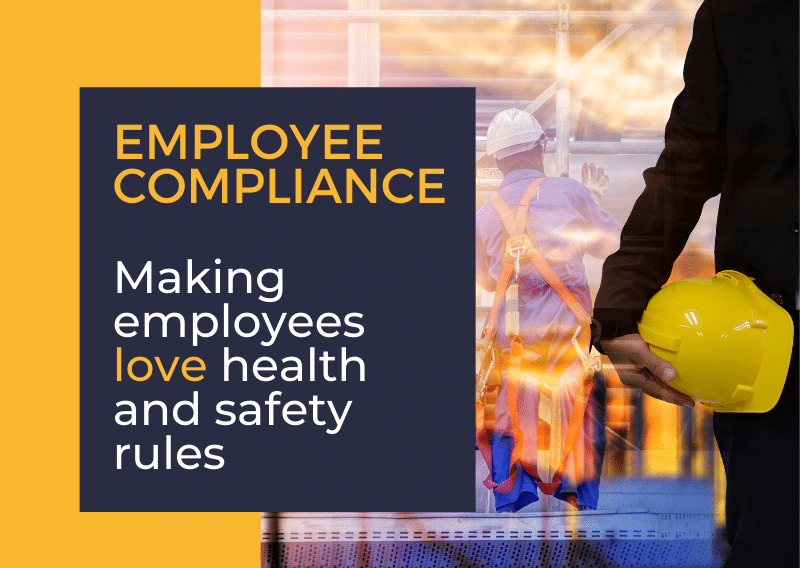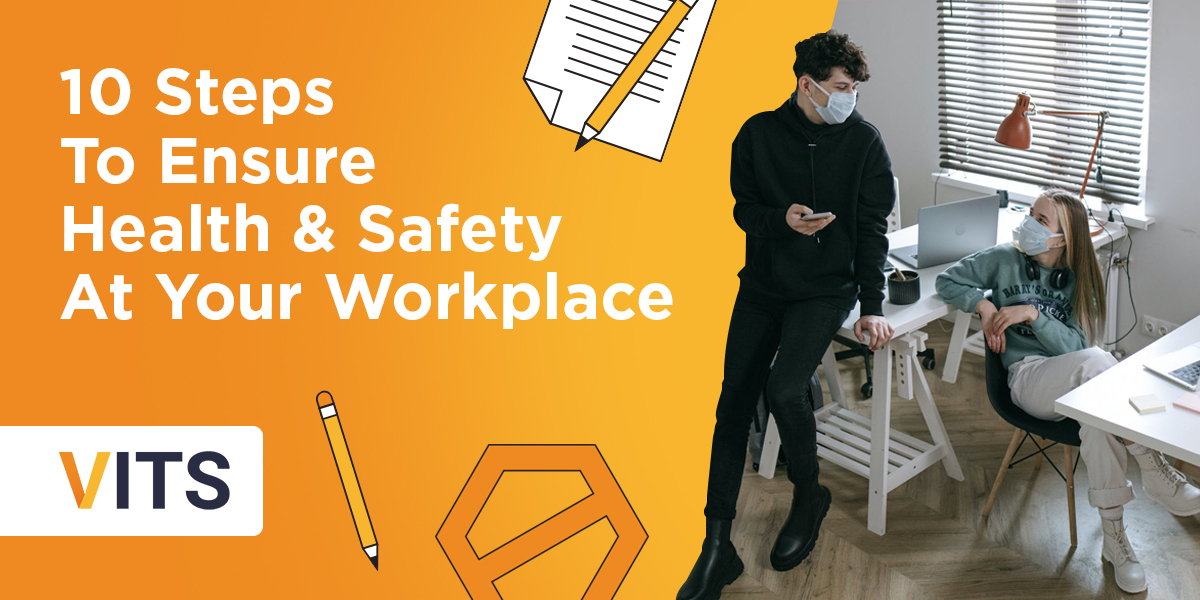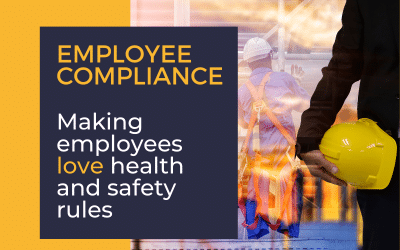Who Is Responsible For Workplace Health And Safety?
Workplace Health and Safety is a joint responsibility. This guide describes what businesses have to do under the law, what the rights of people at work are and how to deal with workplace health and safety issues.
As an employer, do you have a legal responsibility for your employees' health and safety? It's clear that you have a responsibility to provide a safe workplace. However in the case of a court prosecution, it will be for a judge to decide whether you have taken all reasonable measures in all the circumstances, so you should adopt the practices commonly found among reputable companies in regard to health and safety. This can help to give a defence in law if challenged.
Despite the fact that Workplace Health and Safety is the responsibility of both the employees and the employers, it is the company’s duty to ensure that employees are provided with a safe working environment and that their employees have access to guidelines that implement the parameters for that safe working environment.
What can Employers do to Guarantee Workplace Safety?
Prevention is Everyone’s Business
Safety doesn't happen by accident. On the job, every member of the team can make a difference in safety. That's why prevention is everyone's business.
They say an ounce of prevention is worth a pound of cure, and that couldn't be more true when it comes to health and safety. Business owners and employers must ensure that their workplace is free from any hazards and risks to ensure the safety of everyone involved. From creating a safe and healthy work environment to educating employees and contractors about the safety rules and regulations in place, it's important for business owners and employers to follow all health and safety guidelines so they don't face any legal repercussions if their workplace becomes the site of an injury or fatality caused by their negligence.
Preventing accidents and incidents is about more than making sure your staff are trained and equipped (although both of those factors are undeniably important). It's also about getting to the root of potential risks and removing them as best you can. But how do you achieve this? By engaging with your workforce and conducting a workplace risk assessment that identifies potential issues and triggers strategies to mitigate them.
In the event of an accident, workplace incidents must be reported within 24 hours to help ensure that incidents are contained and dealt with properly. By having a more proactive approach to dealing with potential risks, you can limit the impact on your workforce and your business overall.
You need a safe working environment to keep your workforce clear of harm and ensure that your business remains productive. By reporting incidents in a timely manner, you can prevent them from spiralling out of control.
In the event of an accident, workplace accidents must be reported within 24 hours to ensure effective management. Our proactive approach allows us to address risk as it presents itself. In turn, it ensures that incidents are contained and dealt with carefully.
The consequences of ignoring a safety incident can trickle down to everyone in your company. Take preventative measures and report all incidents immediately. This responsible act can save you time, money, and resources for the long run.
Workplace safety is your company’s number one priority. Everyone will benefit from the reduction of workplace injuries and illnesses. You can save time, money, and resources by encouraging your employees to report workplace accidents.
Actively seeking out potential workplace incidents can make it easier for you to deal with any potential risks. This will allow you to limit their impact on both your workforce and your business overall.
Making sure your employees are accessing their physical and mental limits while staying safe is the best way to ensure the longevity of your workforce.
Some worksites are riskier than others, but that's no excuse for workers to take unnecessary risks. Even the safest workplaces need all staff to help manage risks. While no risk can ever be reduced to zero, you don't have to accept the status quo.
Every member of your team can make a difference to reduce risks at work. This booklet will help you understand the range of risks, the actions you can all take to help prevent injuries, illnesses and fatalities, and what you can do after an incident.
Help Staff to Understand Policies
A business can have health and safety written into its policies, but it must be understood by all staff that if they are to follow them. Doing your part to maintain a safe workplace comes with the responsibility of educating employees about what they can do to prevent injuries. It’s up to you to provide training on how to maintain a safe workplace.
Employing someone to be responsible for this helps with training, but does not relieve an organization of its duty of care.
By employing a manager or by following all of the procedures outlined in this book, your business will be practising good health and safety management. All workers—managers and employers alike—have a duty to follow health and safety procedures. After all, whether you’re constructing a building or a ship or a bridge, or manufacturing, shouldn't everyone be concerned about the way it's done?
Encourage Open Communication
Your employees are the first line of defence when it comes to preventing workplace injuries. Workplace injuries are serious, but they are also preventable. Make it easy for your employees to speak up about their safety concerns right away, so you can put a stop to them before they escalate. Making it easy for your employees to come to you with health and safety concerns is a great way to keep everyone working safely -- no matter where they are. When people feel safe, they can return to their jobs even if they've encountered a problem.
Make protecting workers a priority by providing an easy way for them to report health and safety concerns to you right away, so you can protect them from harm's way. By empowering a safety captain or someone from leadership to gather more timely data from employees on the ground, you give your company a better understanding of safety concerns and prevention efforts.
Top Tip: Make use of a safety survey
With a safety survey, you can gather more information about safety issues on your site more frequently. This gives you a better picture of how things are going and helps you pinpoint the areas that may need more focus or immediate attention.
Risk Assessments
Effective workplace safety begins with your awareness of the risks you face, and your policies and procedures to control them. Plan a risk assessment schedule to determine how many different risks are in your workspace, and when they should be assessed. Keep in mind you need to assess these frequently (every 6 months or less), so you can correct the risks before they become threats.
Employers must carry out a risk assessment and display a health and safety policy statement as well as carry out training as necessary. They must also ensure that employees follow health and safety rules, including those on first aid.
You have so many factors to consider when it comes to workplace safety. Your employees' safety, as well as your organization's reputation, may depend on whether you have a solid set of policies and procedures in place. We'll help you understand general risk assessment tools and how to use them to develop a proactive plan for managing the risks that affect your business.
For example, in the case of fire safety:
An awareness of fire risks is the first step toward prevention. Make sure to conduct a risk assessment of your workplace and make plans to avoid, prevent and fight fires. Simple things like making sure fire exits are not blocked, or having updated respiratory protective equipment on hand, can make all the difference in the event of a fire.
Use Signage
Ensuring you have the appropriate safety signs in the working environment, you need to not only ensure that all your staff have the proper training but also that there are safety signs that:
- Include potential workplace hazards and the risks they carry
- The correct emergency procedures for staff to follow
- The correct way (or ways) to deal with hazards in the workplace when and if they arise
- Weekly safety tips
What the Law Says
Have you considered the legal requirements relating to your workplace especially in regard to health, safety and welfare? You might be surprised to know that you have a legal obligation to ensure the safety of your employees. It is imperative that you meet these obligations which can save you from hefty fines.
The Occupational Safety and Health Administration (OSHA) is a set of federal laws, established in 1970, that deal with workplace safety. These laws were created to protect workers from hazards on the job.
In the United States, OSHA is a set of federal laws and safety and health standards that help employers provide a safe workplace for their employees. Your employer is required to follow these laws.
The workplace regulations affect all employers including those employing people on a casual basis. Indeed, failure to comply with other regulations around workplace health, safety and welfare can lead to prosecution.
What are Employees Responsibilities?
Everyone in your workplace must have a clear understanding of the risks associated with doing their job. This information will help you promote workplace safety, and prevent accidents through the implementation of policies, codes of practice, work instructions, and personal protective equipment.
It's the responsibility of every worker to manage risks in their workplace. Identifying hazards can be challenging, but it is your duty to identify risks in your workplace and make sure the employer follows up. Don't wait for an emergency to happen before taking action.
7 Simple Steps to Improve Health and Safety in the Workplace
-
Cultivate a safety culture
A strong workplace safety culture provides an organization with lower insurance costs, reduced claims and injury rates, greater job satisfaction and increased productivity. An effective workplace safety culture can help eliminate these issues, but it begins with leadership. The top tier management, middle management, and everyone in a position of leadership have to be involved with safety practices if a company wants to develop a strong safety culture in the workplace.
A culture of workplace safety involves everyone. Employees must be encouraged to be responsible for what they can control by adhering to the organization's policies and processes, reporting hazardous conditions before it becomes an issue, asking questions when they are unsure of the practices or procedures, and encouraging colleagues to do the same. With a strong safety culture, your leaders can make safety everyone's business!
-
Train employees effectively
Training is a crucial part of any Safety Management program.
Workplace safety training is a crucial part of every company's overall health and safety program – and it's the law. An effective program must cover topics such as:
- Hazards and risk factors
- Recognizing and avoiding unsafe behaviours and conditions
- Basic rescue and medical procedures
- Emergency action and communications plans
- Identifying compliance-related forms for logging injuries, illnesses, incidents or unsafe conditions
-
Reward employees who follow safety policies
Small rewards keep them engaged, which can make a big difference in reducing workplace injuries. Whether you choose to reward with high-fives or something bigger, use our positive reinforcement to encourage compliance with safety policies. Rewarding employees is an effective way to reinforce safety practices. Even the smallest rewards are a way to show their efforts are recognised and can make all the difference in increasing engagement.
-
Get professional help from therapists
Physical and occupational therapists can help you maintain employee health and safety. They’re specially trained professionals who can identify potential danger zones within a work environment.
They can improve workplace ergonomics and conduct human performance exams to evaluate a person’s physical capabilities for various positions.
Physical and occupational therapists can also help improve workplace ergonomics and human performance evaluations, which is a more scientific way of determining the ability to work. These enhanced, scientifically based screening methods can be used to evaluate candidates for physically demanding roles and if they’re able to return to work following an injury. An ergonomics assessment may be used to determine your employees’ risk for injury if they’re not using the proper tools or equipment.
-
Keep it clean & tidy
Clutter can be dangerous, obstructing hallways and blocking exits. A tidy workplace helps create a more organized and productive work environment. Look for sources of clutter such as disorganized tools, messy floors, and tangled cords. Distribute supplies to each workstation so you don't have to waste time making trips across the building or around the office, and consider installing adjustable-height partitions to maximize space usage.
Clear the way and keep safety top of mind by storing smaller items in lockable cabinets or drawers. Really big, bulky items can be stored outside of the office and brought in as needed. As for large bulky items like tables and chairs, it's an office supply organization miracle: place floor tape on the floor underneath and stack them on top of the tape—a simple trick that makes getting these items in and out a breeze.
By removing clutter from the work environment, filing cabinets and tables can be kept neat and organized. This creates a positive work environment for each employee.
-
Ensure staff have the right tools and equipment
The More You Know About What You Need For Your Job, The Safer You’ll Be.
It’s important to understand how your machinery works and to use the correct protection before tackling any task. Machine safety is paramount to your staff’s longevity and the life of your machine as well.
Always read the operator’s manual before you begin any machine operation. Safety is dependent on proper machine operation, regular inspection and servicing of machinery, worker knowledge of how the equipment works, and the use of the appropriate personal protective equipment at all times.
Every operator must read the operator’s manual before you begin any machine operation to ensure that you have a better understanding of how your machine works. Any employee who encounters a potentially dangerous situation while operating machinery should report it immediately to their supervisor.
-
Encourage stretch breaks
It’s important to maintain a healthy body in a healthy workplace. This can be done through many simple stretching exercises. Taking a break during a job, even if it’s just for a minute or so, will help employees from being sore from doing all that work.
Introduce more active stretching into your employees' breaks to improve workplace ergonomics and employee health. Employers can get a real return on their investment in stretch breaks when employees report improved productivity and decreased occurrence of workplace injuries.
The Bottom Line
In today's fast-paced and competitive business world, it's important to understand workplace safety. VITS offer a number of tools that can help you maintain a healthy and injury-free workforce.
Safety doesn't happen on its own. Your job is to work safely, then your next task is to communicate that message across your organisation. So download some of our free resources today and share them with your workers.
Enable safety to become a part of your corporate culture. Be prepared – include VITS in your workplace safety program and experience the peace of mind that comes from knowing you have a partner committed to workplace safety.







